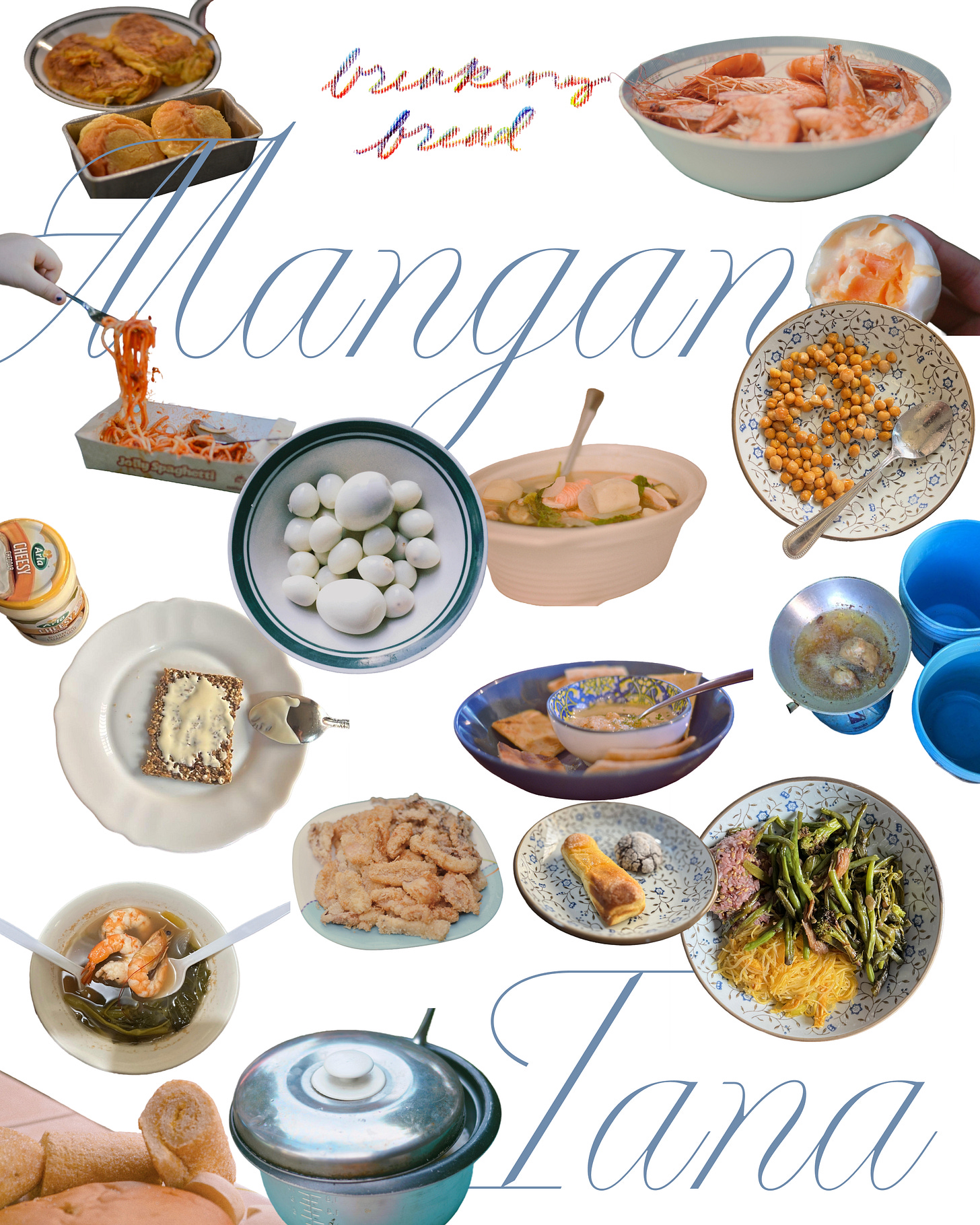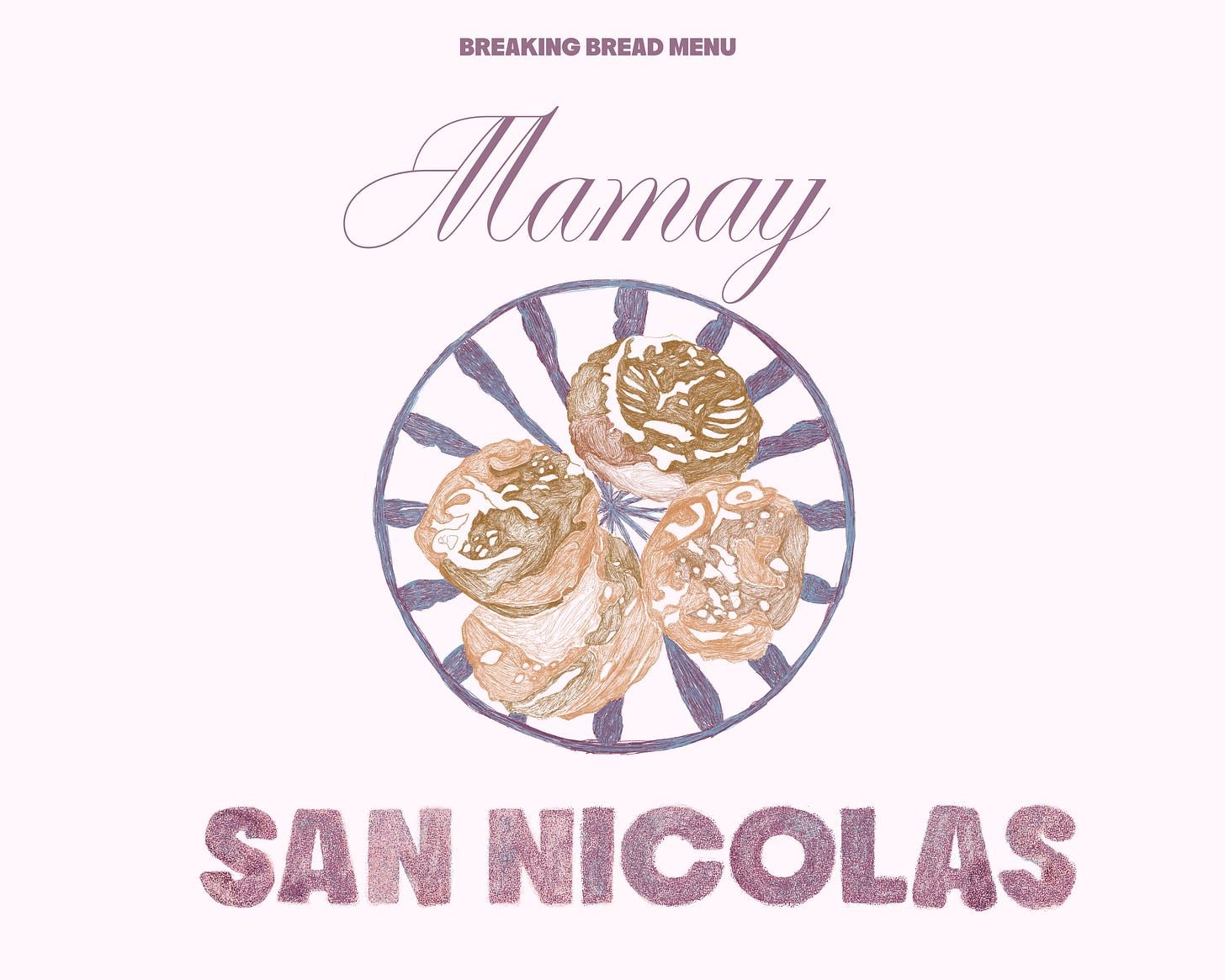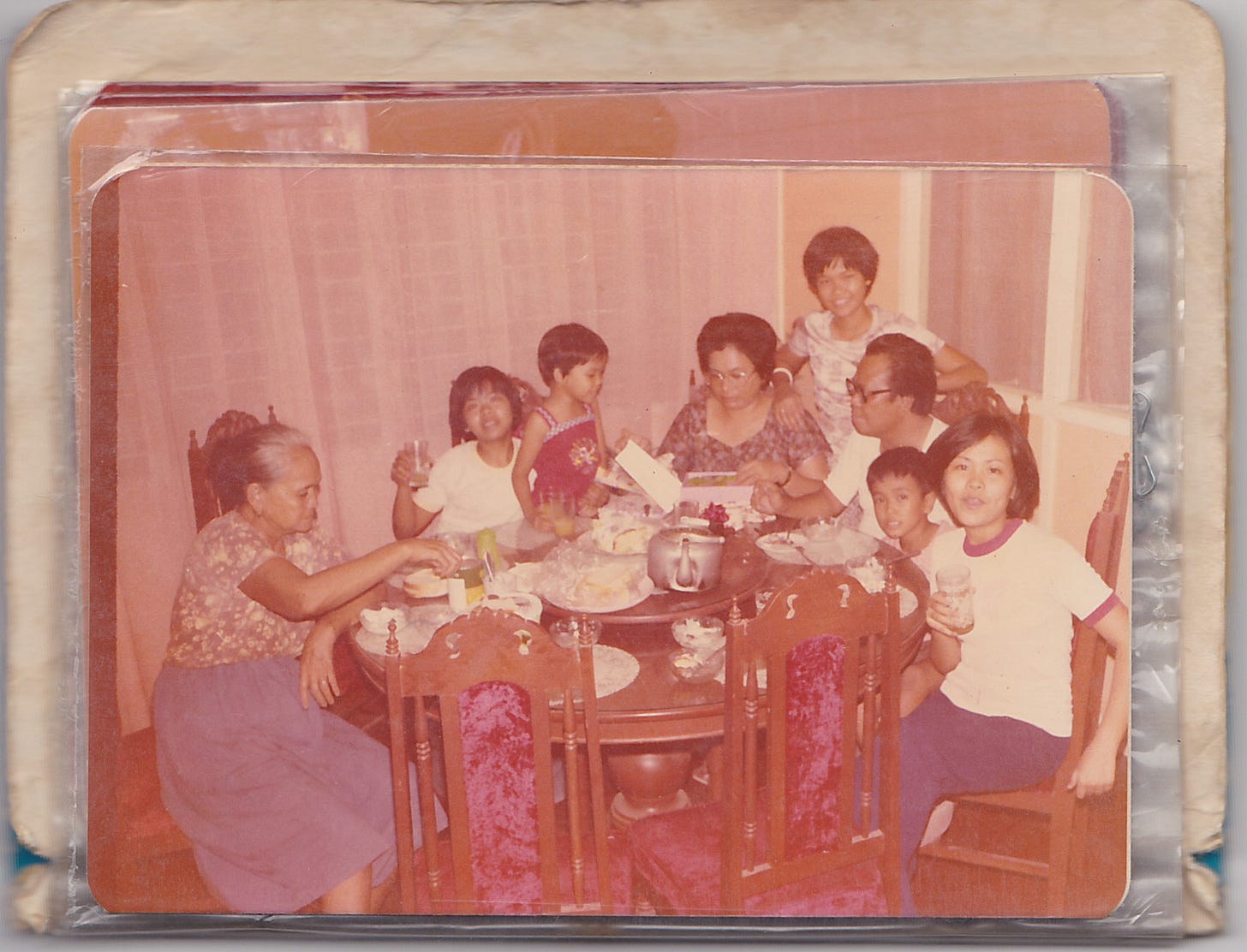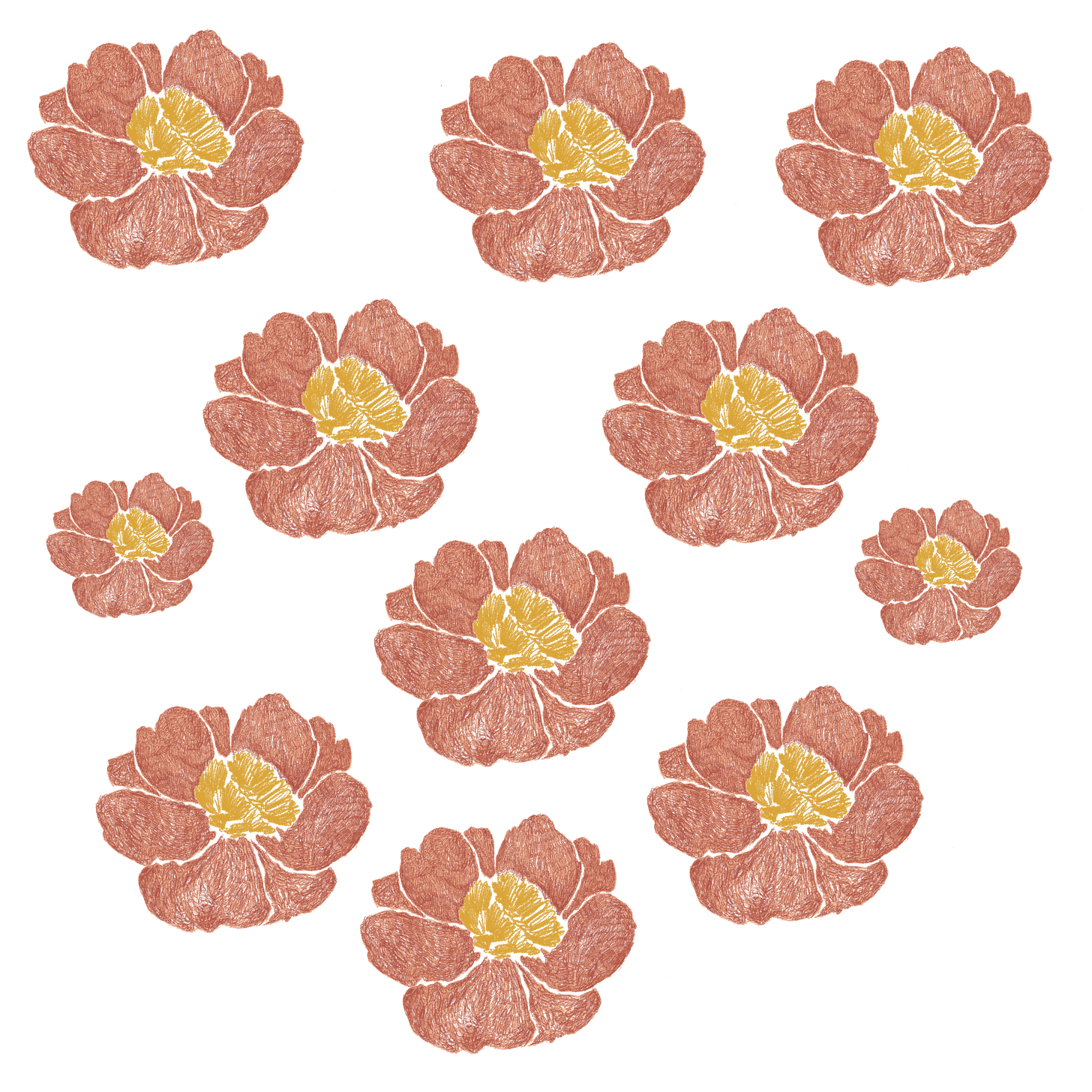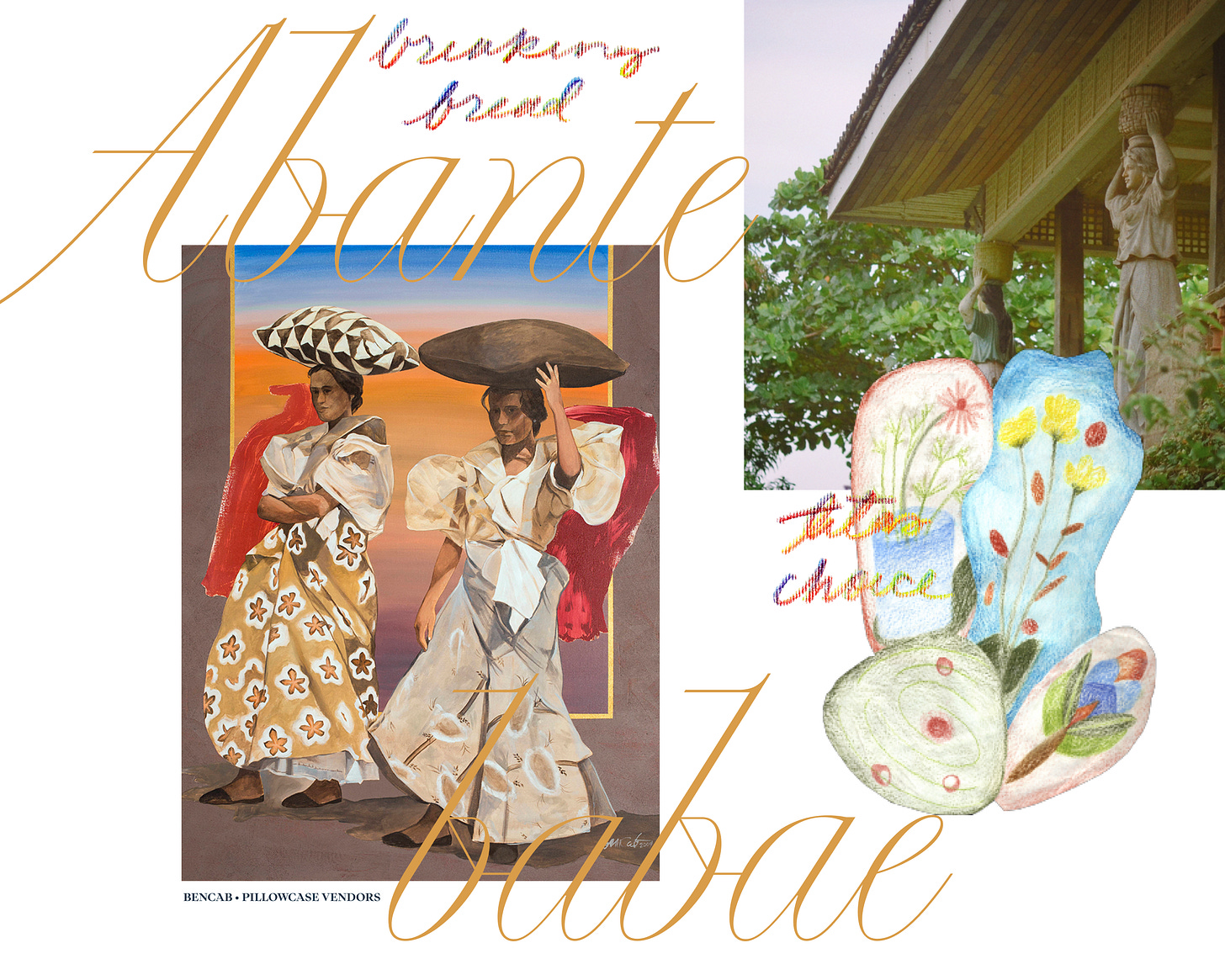TITAS CHOICE
I will always be a Titas girl, through and through.
Last March was Women’s History Month, and as a belated post, I want to honor my 5 paternal Titas. My time spent in this world is informed by my Titas; they are my blueprints.
My favorite memories with my Titas are centered around what ‘breaking bread’ means to me. Through this relational way of understanding of the world, they taught me how to care deeply, and see the subtle magic of the small ways we connect with one another. Always in conversation, and in shared meals.
Having breakfast bright and early with Tita Arleen, learning about her love for tinapay and Arla cheese.
All the picturesque meryendas with Tita Alma, always a spread of pastries, mangga, and whatever fruit was ripe in her garden.
The trips in the tricycle with Mamay all over the plaza in Apalit, where we we always stop by to eat at old family favorites.
ALLLLL of the food trips in Pampanga and beyond the archipelago with Tita Fler, trying both classics and whatever is new and trendy.
The dinners with Tita Kekek and Ma, learning about the best way to steam/sauté/roast vegetables and test all the yummy herbs in her garden.
The greatest lessons they’ve given is not just these memories, but the blueprints they’ve shown me — a masterclass on how to show up to the world.
Tita Arleen
Tita Arleen taught me to move through the world with a sense of ease and poise. To act through unwavering optimism and sustain a positive outlook on life.
NANU PU ING PABURITU NIYUNG TINAPE?
Bread buri ku ngeni ing butter and milk keng ‘Bread Talk’ or Monde’s fluffy wheat bread.
Usually palaman ku: cheese with mayonnaise, butter, and egg. Buri ku egg sandwich; ali ku buri masyadu ing sweet.
English from Kapampangan:
The breads I like now are either: (1) butter and milk bread from ‘Bread Talk’, or Monde’s fluffly wheat bread. I usually pair it with cheese, mayonnaise, butter, and egg. I really like egg sandwich; I don’t like (pairings) that are too sweet.
Tita Shao
Tita Shao taught me how to constantly raise the bar and all expectations. And how to do it all with a smile while rolling up your sleeves. And do it all in good humor and charm.
NANU PU ING PABURITU NIYUNG TINAPE?
Max’s ensaymada bigay ni Mamay — malambot at madami cheese.
English from Tagalog:
I like Max’s ensaymada, given by Mamay — soft with lots of cheese.
Mamay
Mamay taught me how to be the unceasing proof-point of loyalty and tireless dedication to others. How to serve others so fully and willingly without return or reserve. And most admirably, how to have unbreakable faith.
NANU PU ING PABURITU NIYUNG TINAPE?
I love every bite of the San Nicolas biscuit. It is a Kapampangan delicacy with a very creamy and distinct taste. This San Nicolas biscuit is a local product of Apaliteños, particularly from the town of Capalangan.
There are many varieties of the San Nicolas cookie made from other towns of Pampanga. But the one that I like most is the one made from Capalangan.
It is thin and smooth, and has a creamy texture that makes you want for more. I love it more paired with a cup of hot coffee or an iced cold drink.
Tita Fler
Tita Fler taught me how to be resilient in disposition, and to be generous and giving of my time — all essential to the meaning of ‘breaking bread’. And how to guard our rest, and luxuriate in the small joys, together.
NANU PU ING PABURITU NIYUNG TINAPE?
Tinape: Buri ku pandecoco. All time fav ku angga ali ku mamangan buku.
Pastry: Golidilocks egg pie. Creamy and not super sweet. Ali ya magbayu timpla up to now.
English from Kapampangan:
Bread: I like pandecoco. It’s my all time favorite even if I don’t eat really eat coconut. Pastry: Goldilocks’ egg pie. It is creamy and not super sweet. The taste and how it is made hasn’t changed until now.
Tita Kekek
Tita Kek taught me how to stand on my own, maintain a discerning eye, and engage with the world with wide-eyed curiosity. And I will always be grateful for the residual effects of having a naturally creative Tita who babysat me when she was doing her architectural plates and oil paintings.
NANU PU ING PABURITU NIYUNG TINAPE?
Baguette sandwich with tuna/mayo/honey/mustard/pineapple, cucumber strips & tomato. Lunch namin ni Punyang. Busolve na naman ang mga tummy tums!
English from Tagalog:
Baguette sandwich with tuna/mayo/honey/mustard/pineapple, cucumber strips & tomato. This is my lunch with Punyang. Super filling for our stomachs!
ABE TAMU
*All together in Kapampangan
Growing up with these 5 Titas also meant that my dad grew up with them as his 5 sisters. Their influence on my dad—the bunsong lalaki (the youngest son)—is palpable.
My dad, alongside my mom, raised me under a blue sky. What I was and would be capable of was never questioned. And as the Ate (the eldest daughter), diligence towards excellence was expected but was never imposed on me like a weight to carry on my shoulders alone.
Imparted by Ma and Tang, was a principle passed down and held in highest regard: pamakyabe. It is not enough to just be byasa, or intelligent. Dapat byasa kang makyabe. It is much more important to think of your place in the world in relation to others. You can be the smartest person in the room, but if you don’t know how to show up with and in relation to others, all of your efforts in pursuit of excellence are futile.
When I veer off course, my dad — and in their own ways, my Titas, who in the lineage of things, trace it back to Ma and Tang — always reminded me: 'Ali ya dudurut ing yatu para keka o para kaku, dudurut ya para kekatamu ngan.’
The world doesn’t revolve you or me, it revolves around all of us.
In other words, abe tamu.
ING KEKATAMUNG AMANUNG SISUAN
*Our mother tongue in Kapampangan
Each time I visit the Philippines, Pampanga is my muse. Every photo, sketch, video, and voice memos is a love letter to my home. It is the place where I will always land.
I was born and raised in Apalit until I was 7, before migrating to a college town in Florida, and later moving to the Bay Area for college. My dad raised me to stand on solid ground with our Kapampangan heritage as our foundations. He did it out of habit, rather than an expression of a didactic motive or philosophical statement.
The apartments and homes we lived in the United States became spaces where my dad, unconsciously, nurtured an environment that encouraged an engagement with politics, culture, language and history of our homeland, and our amanung sisuan.

My dad’s greatest gift to me to me, rolled into one is the continued preservation of our mother tongue, unquestioned pride in our Kapampangan heritage, while sustaining an interest in engaging with politics and culture around the world.
At a young age, I saw the value of playing a part in preserving my hometown’s collective memory.
The exercise of documenting Pampanga over the years meant a study of how we moved through space in that given time. I was aware that that Ma’s pink house would not be painted pink forever. And that there will come a time when the garden won’t overflow with orchids.
I wanted to fossilize living memories. I exhausted all of my SD cards with photos, videos, sounds in moving vehicles, and snippets of conversations.
One of my favorite Eraserheads songs is “Walang Nagbago”. I used to listen to that song on repeat when nostalgia was a pasttime. I still maintain the impulse to document, and at times, return to my childhood spent outside of my Ma’s pink house, eating with my cousins plates of meryenda, and watching passersbys amidst humidity, with 2-3 electric fans on in full power.
I am a very proud Kapampangan because I was raised in a family where this pride was part of our lineage. I still remember the deep resonance I felt reading a line from Julio Cortázar’s Berkeley lectures when he spoke about Latin American literature: “…what matters is not to be a writer from Latin America but to be, above all, a Latin American writer.”
This is only one of the many pangs of recognition I felt from writers from El Boom like Cortázar. It came at a prescient inflection point in college, when I switched to architecture, and was trying to be fluent in the structural language that would allow me to dissect home in a new form.
I understood that I was not an architecture student who happened to be from Pampanga. I was a Kapampangan architecture student, and now a Kapampangan design researcher.
I am reading Jean Cocteau’s diaries where he writes about ‘foundations’, or the core essences of different cities. Cocteau urges: “It’s important to be aware of the foundations where you live.” I understand clearly where I am positioned — with myself, with others, and the world —because I am firmly aware of my foundations.
PAGUBUBUO
*The formation in Tagalog
Two years ago, I began exploring my creative lineage with the question: who are the reference points woven together over time that inform and inspire how I design, practice, and show up in the world?
Journalists, architects, painters, filmmakers, artists, musicians, fashion designers, creative designers, polymaths, and, of course, my Titas form that larger tapestry.
Once, Agnes Varda was asked what her cinema offers to people. She responded,
“I mean, a woman working with her intuition and trying to be intelligent. It's like a stream of feelings, intuition, and joy of discovering things. Finding beauty where it's maybe not. Seeing. And, on the other hand, trying to be structural, organized; trying to be clever.”
This quote encapsulates what my Titas mean to me. They are 5 women working with their intuition and looking at the world squarely in the eye — ready to engage with it, and ready to make use of what they have.
Abante babae,
Olac-olac / bujoinks / Jenjen / Tita Jeninaaaaaaaaa






